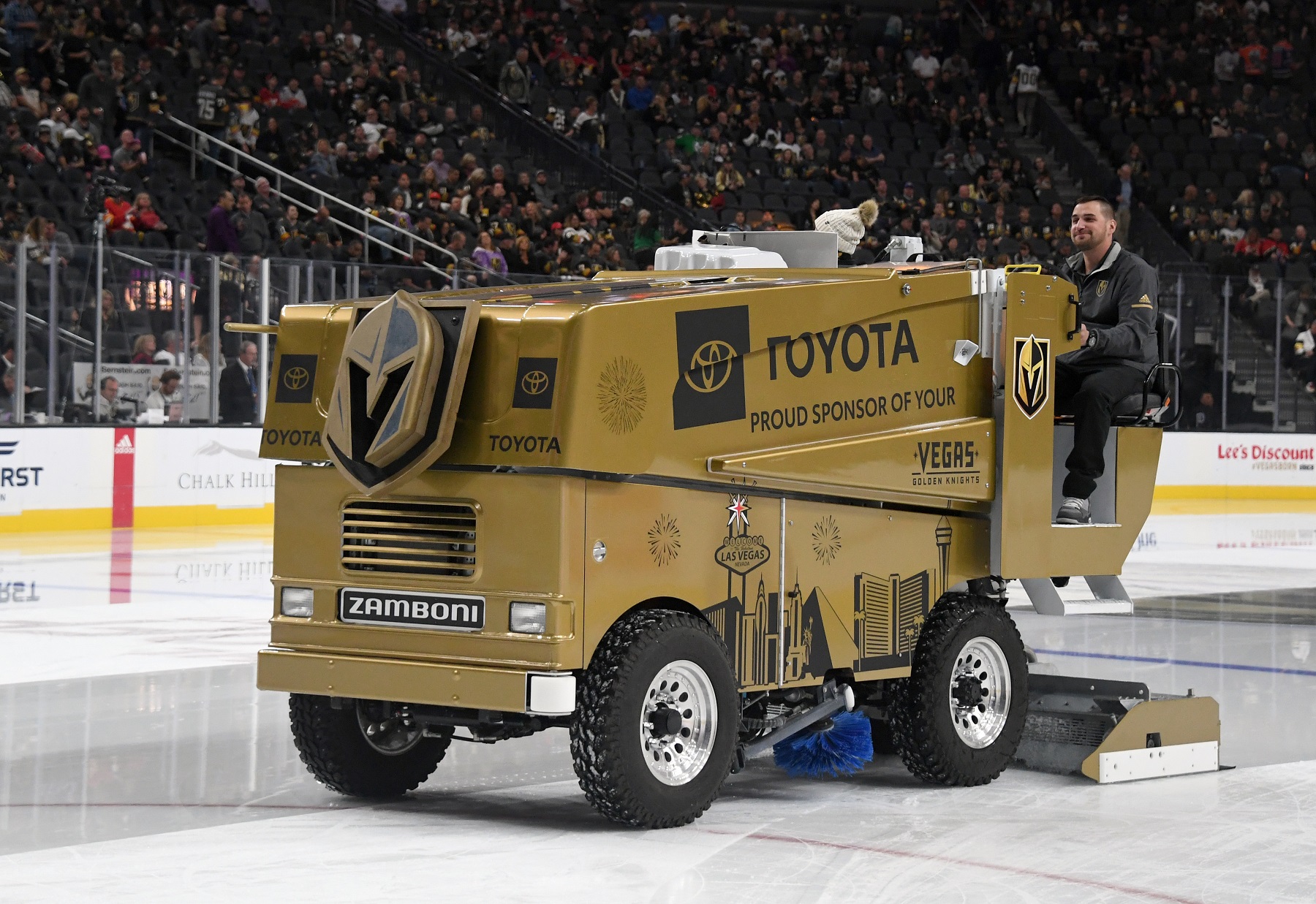NHL
The Fire on Ice Pretty Much Sums up the Bizarre 2020 Sports World

The NBA season just ended right about the time that the league should be starting a new year. The baseball postseason could stretch out to one-third the length of the abbreviated regular season. An on-again, off-again college football season is struggling along following a year without the NCAA Tournament in basketball. And, three weeks of COVID-related shutdowns have turned the NFL schedule into a game of Where’s Waldo?
To top it all off, we have a ice-resurfacing machine that caught fire on – of all places – a sheet of ice. Yes, sports fans, it’s been that kind of year.
Fortunately, we have something to look forward to that will help wipe away memories of how crazy 2020 has been: The Masters is less than a month away. Because playing for a coveted golf championship in November is, you know, a tradition unlike any other.
A ice resurfacer caught fire while clearing the ice
RELATED: Bizarre Facts You Never Knew About Hockey
A youth hockey game in a suburb of Rochester, New York, was disrupted Wednesday when the vehicle that was resurfacing the ice caught fire, the Democrat and Chronicle reported. The incident, which became an internet sensation thanks to widely circulated videos, happened at the Bill Gray’s Regional Iceplex, a multi-rink facility in Brighton, just south of Rochester.
The complex is situated on the campus of Monroe Community College. Ironically, the junior college does not have a hockey program.
Flames began appearing beneath the vehicle before the blaze spread to the rear, engulfing it. The driver was able to pull the machine off the ice, where the flames were quickly extinguished. No one was hurt, the Rochester Fire Department reported.
The fire is believed to have started after the hydraulic fluid line on the machine ruptured, spewing flammable liquid onto hot mechanical parts.
How does a Zamboni work?
RELATED: What Happened to Don Cherry After He Lost His Job on ‘Hockey Night in Canada?’
The sheet of ice on most hockey rinks is typically little more than an inch thick. Anyone who has been in a rink will tell you that it’s chilly, but air temperature isn’t what turns the water into ice. Rather, it’s a system of pipes beneath the thin concrete floor. The pipes are filled with a refrigerant that runs through a condenser and chills the concrete, which in turn freezes the water. When new ice is put down periodically over the course of a season, the water is poured one thin layer at a time.
With five skaters and a goalie per team on the ice for 20 minutes of game action at a time, all those sharp blades chew up the ice. That’s where the Zamboni ice resurfacer — the one that caught fire was from an unspecified other manufacturer, by the way — comes into play between periods.
A sharp blade at the front of the vehicle collects ice chips and shaves a thin layer of ice, depositing them into a tank. Behind the blade, two streams over water cover the surface. The first washes dirt and other impurities away. The second lays down a new thin coat of water to replace what has been removed.
The entire process takes about 10 minutes.
Where did the Zamboni get its name?
RELATED: What Is the Longest Playoff Hockey Game Ever Played in the NHL?
Several companies manufacture equipment that resurfaces sheets of ice at hockey and skating rinks. Zamboni is the original.
Frank Zamboni invented the motorized ice resurfacer – in California, of all places — shortly after World War II. Zamboni and his brother built an ice rink in Paramount, California, but they realized from the start that keeping the surface in top condition was a tedious task.
Zamboni experimented with various devices until coming to the conclusion that a motorized vehicle would be the most efficient device. He tinkered with the process for several years and produced his final prototype in 1949. Zamboni began production shortly afterward.











